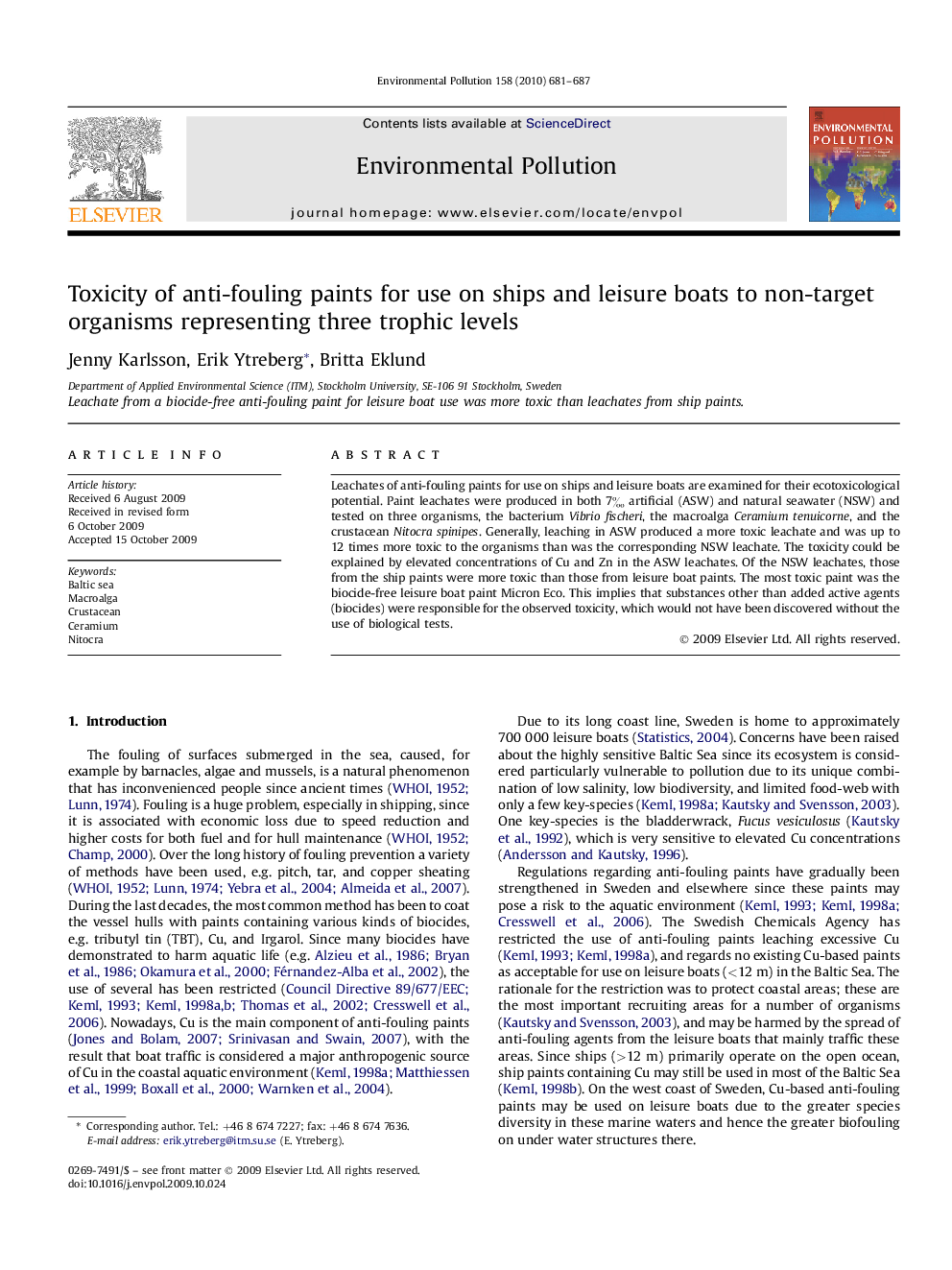| Article ID | Journal | Published Year | Pages | File Type |
|---|---|---|---|---|
| 4426444 | Environmental Pollution | 2010 | 7 Pages |
Leachates of anti-fouling paints for use on ships and leisure boats are examined for their ecotoxicological potential. Paint leachates were produced in both 7‰ artificial (ASW) and natural seawater (NSW) and tested on three organisms, the bacterium Vibrio fischeri, the macroalga Ceramium tenuicorne, and the crustacean Nitocra spinipes. Generally, leaching in ASW produced a more toxic leachate and was up to 12 times more toxic to the organisms than was the corresponding NSW leachate. The toxicity could be explained by elevated concentrations of Cu and Zn in the ASW leachates. Of the NSW leachates, those from the ship paints were more toxic than those from leisure boat paints. The most toxic paint was the biocide-free leisure boat paint Micron Eco. This implies that substances other than added active agents (biocides) were responsible for the observed toxicity, which would not have been discovered without the use of biological tests.
